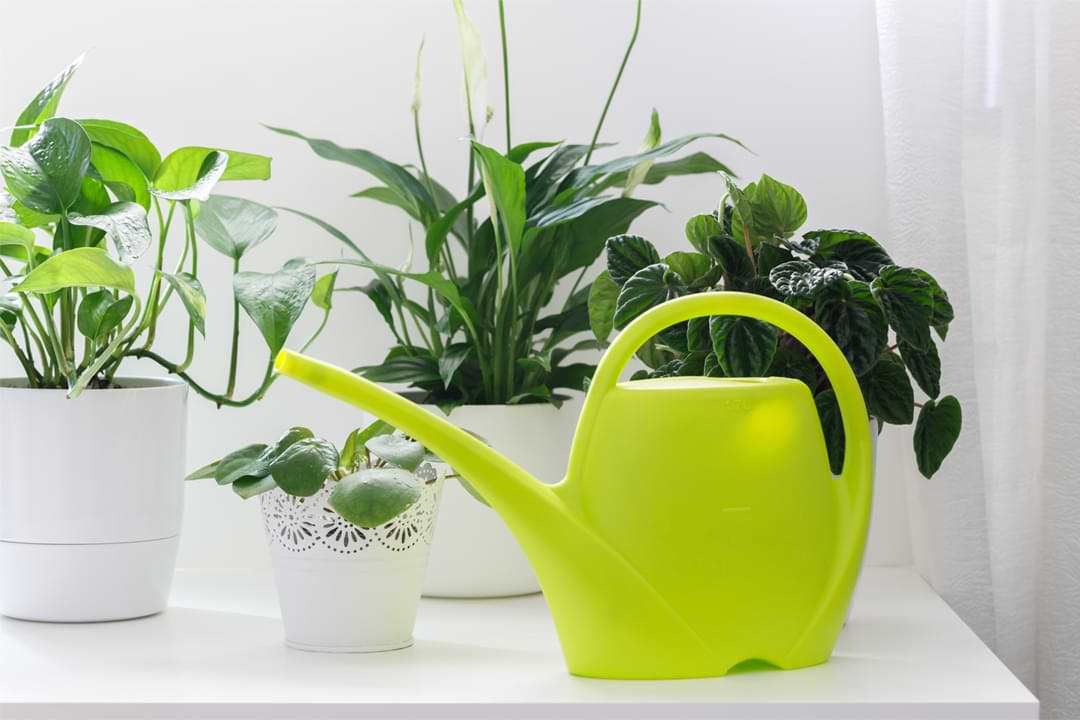Like any plant, peperomia plants can develop health problems, even though they’re quite easygoing for the most part. Despite your best efforts to water and fertilize them properly and provide the best environment possible, you still might run into issues! Here’s a peperomia troubleshooting guide to the most common peperomia issues you may encounter.
Table of Contents
Peperomia Troubleshooting
Slow (or no) growth
Some varieties of peperomia require more light than others, but if your peperomia hasn’t grown a new leaf in months, your plant might want more sunlight!
Peperomia plants are fairly slow-growing and stay pretty small (one of several factors that make them ideal for small spaces), but they should grow steadily. If your plant just isn’t growing and you want it to, give it more indirect sunlight!
Leaves falling off
Leaf drop can have many causes, but the most common are underwatering and overwatering. (Helpful, right?) But leaf drop usually comes with other symptoms that can help you determine the cause. If you also notice leaves near the bottom of the plant turning yellow and the soil is moist several days after you watered, your plant might be overwatered.
If you also notice drooping or crispy leaves and the soil is dry, your peperomia plant is likely underwatered. Give it a drink!
Drooping leaves
Drooping leaves can also have different causes, but the most common by far is thirst. If you notice drooping leaves AND your peperomia’s soil feels dry, your plant could probably use some water.
Another common cause of drooping leaves is shock. If you just repotted your plant or moved it to a new location, a little droopiness is normal for a few days. Just return to your regular care routine and give your plant a chance to adjust.
Curling, faded, or crispy leaves
If your peperomia leaves are curling up, turning light brown or gray, or if they feel dry and crispy, your plant is underwatered and/or lacking humidity.
If the soil feels dry more than a few inches down, you probably need to give your peperomia a good watering. If the soil seems okay, you might want to consider setting your peperomia on a tray of pebbles and water to provide more humidity. And make sure there isn’t a vent, draft, or heater nearby!
Yellowing leaves
Leaves can turn yellow for several reasons (are you noticing a theme here?), but the location of the yellow leaves and the condition of the soil can help you determine the exact cause.
If leaves are yellowing toward the center or bottom of the plant and the soil feels wet several days after you last watered, it’s likely your peperomia is overwatered, either because you watered too soon or too much, because it’s not getting enough light, or because the pot or soil isn’t draining quickly enough. It’s also worth it to use a moisture meter to check on the moisture level of the root ball even if the top of the soil is dry. This will help you get a better idea of what’s actually going on inside the pot!
If leaves all over the plant are turning yellow and then become dry and crispy, your peperomia is probably underwatered. Make sure you’re watering often enough and giving your plant enough water when you do, and that your soil is absorbing water properly. (If the soil is compacted, it’s time to repot!)
If the soil is fine, if your plant doesn’t seem to be over- or underwatered, if leaves are yellowing all over the plant, and if you haven’t fertilized in a while, your plant might be deficient in vital nutrients. Start adding Indoor Plant Food to your water to give your peperomia the nutrients it needs to be healthy!
Browning leaf tips
If the tips of your peperomia’s leaves are getting brown and crispy, it’s possible that your plant is underwatered, but your plant may also need more humidity to keep the leaves soft and supple. Try placing your peperomia on a tray filled with pebbles and water (just don’t let the roots or soil touch the water) to provide more humidity as the water evaporates, or set up a humidifier nearby.
Mushy stems
If the stems of your peperomia feel soft and mushy and are turning brown, your plant has root rot. Make sure to repot your plant into fresh, clean soil and a clean pot, and trim away any blackened or squishy roots. Give it a little more light and ease up on the water, and try using our Root Supplement when you do water to help the root system recover.
Learn More About Caring for Peperomia Plants
Overall, peperomia plants are easy to care for and can provide a bright splash of light and color to any space! Don’t stop with our peperomia troubleshooting guide, learn more about caring for peperomia plants with our guides and resources below.
Articles:
How to Care for Peperomia Plants
How Often to Water a Peperomia Plant
The Ultimate Guide to Peperomia Varieties
The Best Fertilizer for Peperomia Plants
Supplies:




